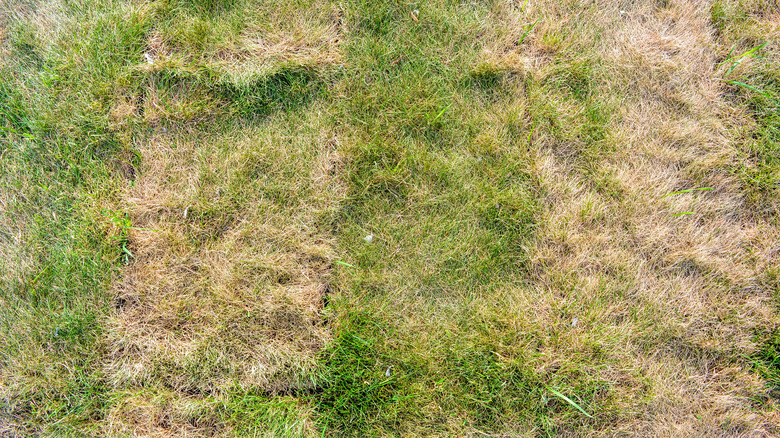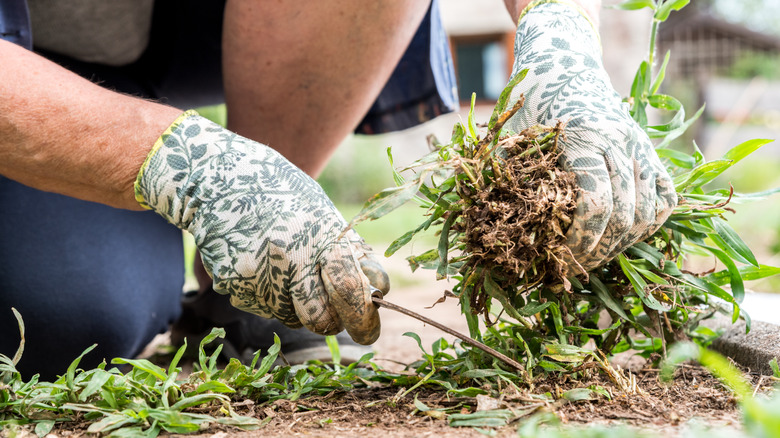Lush and healthy grass has the ability to transform our lawns and completely elevate our outdoor spaces. Unfortunately, there are many funguses and diseases that can plague our yards and are often hard to identify. While red thread is hard to distinguish from pink patch, a more common but less severe issue, it is a lawn disease to be wary of. Showing itself in strings of red, red thread spreads fast and produces cotton-like balls. This fungus commonly affects grasses such as Kentucky Bluegrass, fescue, perennial ryegrass, and bentgrass, but any lawn can be infected in the right conditions.
Removing red thread will require a number of lawn care tasks that focus on eliminating excess moisture, providing new nutrients, and keeping a clean and tidy space. Once you begin the process of nursing your grass back to health, you can expect to see a recovered yard within just a couple of weeks. If your lawn has already been treated for red thread, keeping up with lawn maintenance is crucial to ensure the disease doesn’t return.
what is red thread?

Red thread is a common fungal disease that infects lawns in poor conditions and in cool, cloudy, and humid climates. Known as laetisaria fuciformis, you can identify red thread by patches of drying grass, usually between 2 to 6 feet, with red strands and floccose mycelium woven throughout. Grass around the fungus will wilt at the tips and take on a rugged and unusual appearance. You may also notice a jelly-like substance along the grass’s surface. When red thread spreads throughout your lawn, it’s essential to take action as soon as you spot it, as the ropes of pinkish-red typically show up after the disease has progressed into later stages.
Your yard can become increasingly susceptible to red thread when you experience excess rain, thatch builds up, grass lacks adequate nutrients and nitrogen, you’re overwatering, and if there is not enough sunlight reaching parts of the lawn. Ideal temperatures for the disease to thrive are between 40 to 75 degrees Ferenheight, with 60 to 75 degrees being prime weather. The overcast skies and consistent rain, often experienced in fall and spring, make these seasons ideal for red thread to grow, but it can happen at any time with the right mix of deteriorating conditions.
Treating your lawn for red thread

Treating red thread primarily lies in taking proper care of your lawn. Typically, it’s neglect that leads to red thread in the yard, so remedying those conditions will make a drastic impact. Begin with clearing debris like trash, wet leaves, and dead sticks clogging up the space, and remove as much of the infected patches of grass as you can. It’s important to note that mowing red thread won’t solve the issue but also won’t cause it to spread. Apply mulch and compost to create better drainage and aeration, relieving some pent-up moisture. Additionally, make your grass more accessible to sunlight if possible. This could mean moving outdoor furniture or trimming up trees and shrubs to remove sun blockage.
After you have cleaned your lawn and removed the red thread, the grass will need to maintain healthy conditions to fend off the remaining disease and not become susceptible to it again. Applying nitrogen fertilizer will help the grass grow and regain strength, and leaving behind grass clippings will provide additional nutrients. Avoid watering in the late afternoon and evening so water isn’t stagnant overnight and has plenty of time to absorb and evaporate before nightfall. Frequently mow your grass to a nourishing length that isn’t too short it’s defenseless, or too long that it breeds bacteria. Lastly, don’t allow thatch to exceed ½ inch thick, and perform routine overseeding and weed removal.



